ISDN or Integrated Services Digital Network, is a circuit-switched telephone network system that transmits both data and voice over a digital line. You can also think of it as a set of communication standards to transmit data, voice, and signaling.
These digital lines could be copper lines. It was designed to move outdated landline technology to digital.
ISDN connections have a reputation for providing better speeds and higher quality than traditional connections. Faster speeds and better connections allow data transmissions to travel more reliably.
The modern upgrade to an ISDN would be using a SIP trunk provider — they use the data for business phone service to a PBX.
What We’ll Cover:
- History of ISDN
- How ISDN works
- What is the difference between ISDN and DSL?
- What are the types of ISDNs?
- Advantages of ISDN
- Alternatives to ISDN
History of ISDN
ISDN was born out of necessity. Analog phone networks failed constantly and proved to be unreliable for long-distance connections.
Sometime in the 1960s, the system began to change over to a packet-based, digital switching system.
The UN-based International Telecommunications Union, or ITU, started recommending ISDN in 1988 as a new system for operating companies to deliver data.
It still took time for communication providers to begin to offer ISDN. This was mainly because both major companies at the time were on separate operating systems. By the 1990s, the National ISDN 1 (labeled N1-2 for short) was created.
While this innovation could improve the quality of communications, an agreed-upon standard still took time to figure out.
Finally, manufacturers like Motorola and USRobotics decided to make the transition easier for everyone.
ISDN then launched across the US. It provided consumers with better pricing and higher-bandwidth internet access.
Today, ISDN has been replaced by broadband internet access connections like DSL, WAN, and cable modems. It is still used as a backup when the main lines fail.
Get the reliability and scalability your team needs with Nextiva.
Redundant data centers across the U.S. Multi-peer gigabit networks. Exceptional reliability. Easy to manage.
How ISDN works
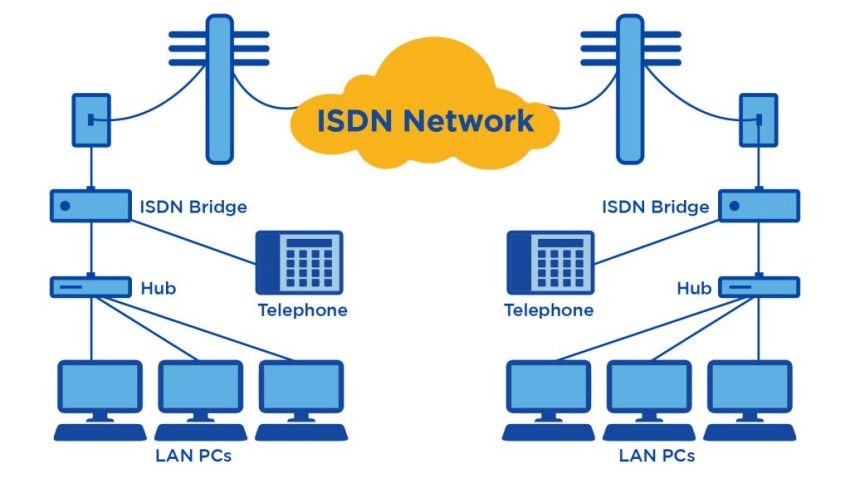
It’s easy enough to define ISDN, but do you know how it works?
Most people use ISDN for high-speed internet when options like DSL or cable modem connections are not available.
Setting up ISDN is something you’ll want to work on with your Internet Service Provider (ISP). A lot of the steps can easily be done from your home.
Your ISDN will be plugged in through a traditional POTS (Plain Old Telephone Service) line that can access both phone numbers at once.
You’ll have to make sure you have a working POTS line and assigned phone numbers to begin.
After that, you can follow the steps below to get your voice and data communications up and running.
ISDN setup
Setting up an ISDN connection involves using a serial port and plugging in the telephone company line.
The process of setting up ISDN involves:
- Loading the modem driver disk and programming the modem
- Pointing the modem toward the right phone numbers
- Setting your connection speeds for each line
- Directing your modem to dial your ISP (Internet Service Provider) — this phone number should be provided by your ISP
- If necessary, set your modem for BONDING (the ability to access higher speeds by allowing your modem to dial both phone numbers at once)
What is the difference between ISDN and DSL?
There are a few key differences between ISDN and DSL. For starters, DSL transmits data far faster than an ISDN line can.
That’s because ISDN is a dial-up service that goes through a singular line. DSL connections never need to dial. They are sometimes called “always-on connections.”
Because of that, DSL sends its packets at speeds up to 100 Mbps, while ISDN tops out around 128 Kbps.
While both of these provide the same service, they do so in radically different ways.
What are the types of ISDNs?
There are two types of ISDN networks — BRI (Basic Rate Interface) and PRI (Primary Rate Interface).
The major difference between BRI and PRI is the level of service and reliability.
To sum them up:
- BRI is the lower tier of service. It only provides basic needs at a lower cost.
- PRI is the main service. It provides a better connection, more reliable service, and faster speeds.
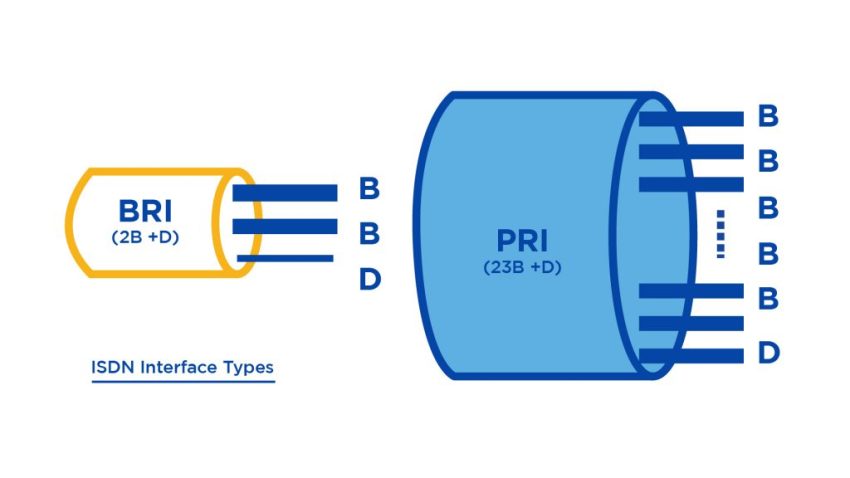
Both PRI and BRI ISDN use B channels for sending data and D channels for other forms of communication. The difference lies in the number of channels they use to accomplish this.
For instance, BRI uses only two B channels and one D channel. It has a maximum speed of 128 kbps.
PRI varies in the number of channels it uses given its location. It can be adjusted for speeds up to 2.94 Mbps.
In the US, PRI tends to use 23 B channels and one D channel. The amount can be doubled for faster speeds and provide a backup D line for emergencies.
Speed: BRI vs. PRI
ISDN comes with a set speed for each option.
BRI provides 128 Kbps over a standard copper wire, broken down into 64 Kbps over the B channel and 16 Kbps over the D channel.
Using a PRI can potentially double those speeds.
The two competing standards make use of both B channels to access the 128 Kbps throughput and include:
- BONDING (Bandwidth On Demand Interoperability Group) — a set of ISDN protocols that allow users to use more than one ISDN B channel. This is also known as multilink, channel aggregation, or load balancing
- Multilink PPP — a method for splitting, recombining, and sequencing data across multiple links. This is not specific to ISDN and can be applied to other technologies

PRI is a T1 circuit that supports 23 B channels at 64 Kbps and 1 D channel at 64 Kbps.
This gives users the ability to combine B channels to form a larger network.
What are the advantages of ISDN?
So why do people use ISDN?
It first started as an alternative to your dial-up connection that provided higher internet speeds.
To access the internet with ISDN, users had to connect through a digital modem.
People still use ISDN for internet access in areas where broadband internet isn’t an option. For the most part, ISDN for internet access is being phased out.
There have been many attempts to improve the ISDN service.
Broadband ISDN, also known as B-ISDN, transmitted data over fiber optic cable. Another attempt was ISDN BRI which attempted to improve voice services.
Some of the reasons people choose ISDN are:
- It offers multiple digital services that operate through the same copper wire
- Digital signals broadcast through telephone lines.
- ISDN provides a higher data transfer rate.
- Can connect devices and allow them to operate over a single line. This includes credit card readers, fax machines, and other manifold devices.
- It is up and running faster than other modems.
The cost of ISDN is much higher than some traditional broadband options. This forced people to search for alternatives. One popular alternative is VoIP.
Get the reliability and scalability your team needs with Nextiva.
Redundant data centers across the U.S. Multi-peer gigabit networks. Exceptional reliability. Easy to manage.
Alternatives to ISDN
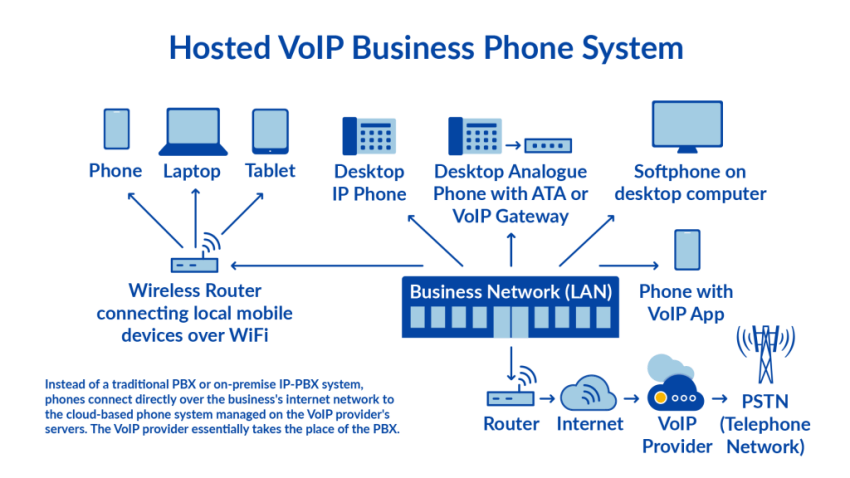
VoIP (aka Voice over Internet Protocol), takes audio signals and turns them into digital transmission data. That data can be sent from point-to-point through the internet.
VoIP is taking the place of traditional telephone system lines. It lets users make phone calls over the internet without needing a physical telephone line.
There are several ways users can access the benefits of VoIP. Some examples include ATA (analog telephone terminal adapter), IP Phones, and computer-to-computer connections.
While SIP trunking is similar to cloud phone service, it lacks advanced phone features that many now expect. But it’s still worth considering.

A Comparison of ISDN Service and VoIP
| Comparison | ISDN | VoIP |
|---|---|---|
| Reliability | Difficult to set up and easy for the system to fail. | Takes seconds to set up, low call failures, and can be used as both a primary or secondary solution |
| Form | Requires external, physical circuit to be installed | Plug into existing internet connection with no external sources needed |
| Flexibility | Tied to a contract/geographical area code and changes can take several weeks to implement | Make changes instantaneously, and is not tied to a geographical location |
| Cost | Expensive to implement and costly to make calls with bearer channels | Low install costs and between 40-90% cheaper to make calls |
| Futureproofing | Outdated with a confirmed end-of-life timescale | Easily customizable, scalable, and cost-effective |
The Benefits of VoIP
It’s clear that the VoIP benefits outweigh ISDN. The flexibility and cost-effectiveness alone make it with a second glance.
The above table does a great job of outlining the differences between the two. It shows the weaknesses of an older offering, like ISDN.
When you go beyond the promise of a lower cost and flexibility, it’s obvious that VoIP offers a whole lot more.
1) Cost
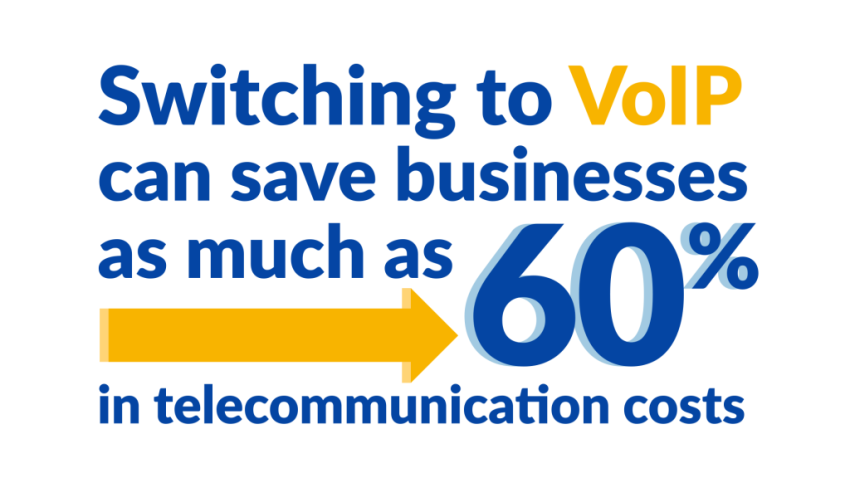
For businesses, few options compare to the savings of VoIP.
One huge story of cost saving came from Dell, who used a mobile VoIP workforce and saved a reported $39.5 million.
A landline phone system could cost an average of $50 per line. That includes only local and domestic calls.
A VoIP line can save as much as 60% and comes with a host of other offerings that landlines didn’t have.
2) Accessibility
You can take your VoIP anywhere as long as you have internet access.
It’s like your email account, where you sign in with your ID and uses the network connection as your phone line.
VoIP gives employees far more options than were ever offered with traditional analog phones in the form of virtual phone systems.

Unified messaging is a major bonus for VoIP users. This is a feature that allows remote employees to tap into their business phones through mobile applications.
3) Scalability
Need to add a line? VoIP makes that easier than ever.
This is thanks in large part to the fact that you no longer need to have a physical landline installed.
Installing a new VoIP line is basically like getting a new username assigned to you. It can be attached to any device, at any time, and is ready for use in just a few minutes.
The ability to add a new employee line at the click of a button allows businesses to expand without incurring unexpected costs.
4) Control
With VoIP, you control a lot more than you could with traditional landlines.
Most of us won’t even pick-up the phone for an out of area phone number. VoIP lets businesses assign a local phone number to appeal to their specific market.
VoIP also allows large and small businesses the added benefit of auto-attendant. This gives consumers the perception that the business is bigger than it is.
It leaves the customer feeling like they’re contacting a well organized and professional organization.
5) Voice Quality
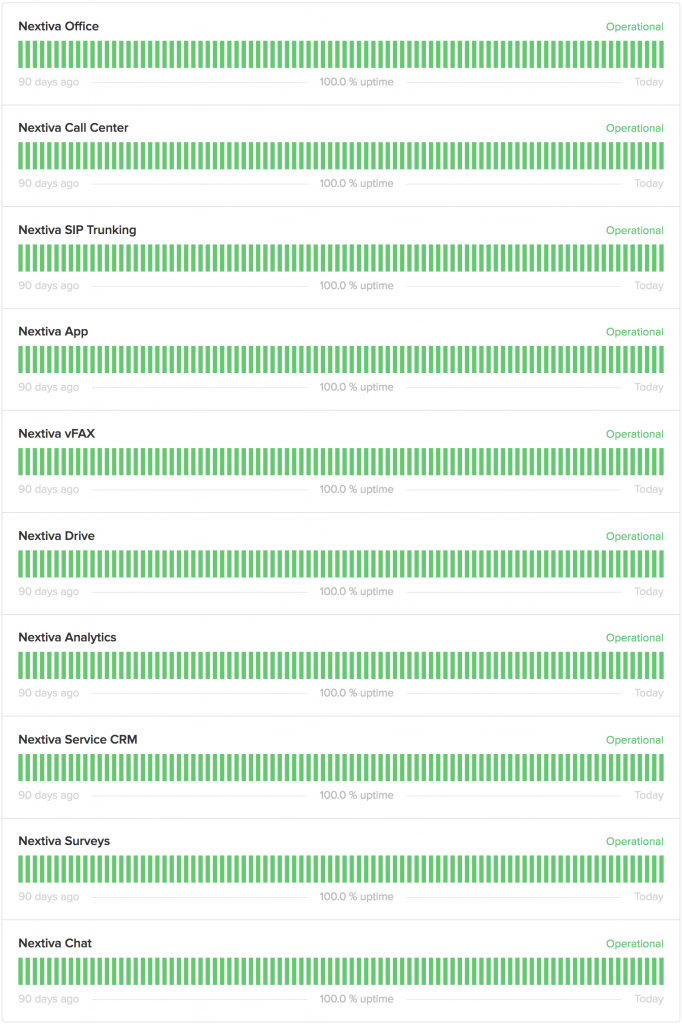
As long as there is a reliable internet connection, users should experience sound quality that is just as good, if not better, than traditional landlines.
Need proof?
Just look at Nextiva’s uptime and performance over the last 90 days:
The only issues with VoIP quality are when you run into internet connection issues.
Bad bandwidth will equal a bad connection. That means VoIP may not work as well in rural areas that have limited internet connectivity.
6) More Features
The reason so many businesses are switching to VoIP is because of its features.
To save costs, businesses can add:
- Call forwarding
- Call waiting
- Voicemail
- Caller ID
- Three-way calling
- And more
VoIP allows users to transmit data over the line even while they’re in the middle of a call.
One of the most sought-after features for businesses is video conferencing. It’s easier than ever to get the entire office on a call. That’s even true for traveling and remote employees, thanks to the VoIP video feature.
It’s one of the biggest cost-savers that VoIP offers.
In Conclusion
It’s clear that VoIP is changing the way people experience business communications. And more than that, it’s giving businesses more flexibility than they’ve ever had before.
By adding users through an online portal, connecting cell phones to business lines, and allowing for seamless team collaboration, VoIP checks all the boxes.
VoIP reduces the upfront and monthly costs businesses once had to shell out to have traditional phone lines.
The antiqued options, like ISDN, no longer give users what they need. Unified communications is the way of the future, so it’s no surprise that VoIP is taking off like a rocket. Are you ready to add it to your business?
Get the reliability and scalability your team needs with Nextiva.
Redundant data centers across the U.S. Multi-peer gigabit networks. Exceptional reliability. Easy to manage.

















 VoIP
VoIP 








